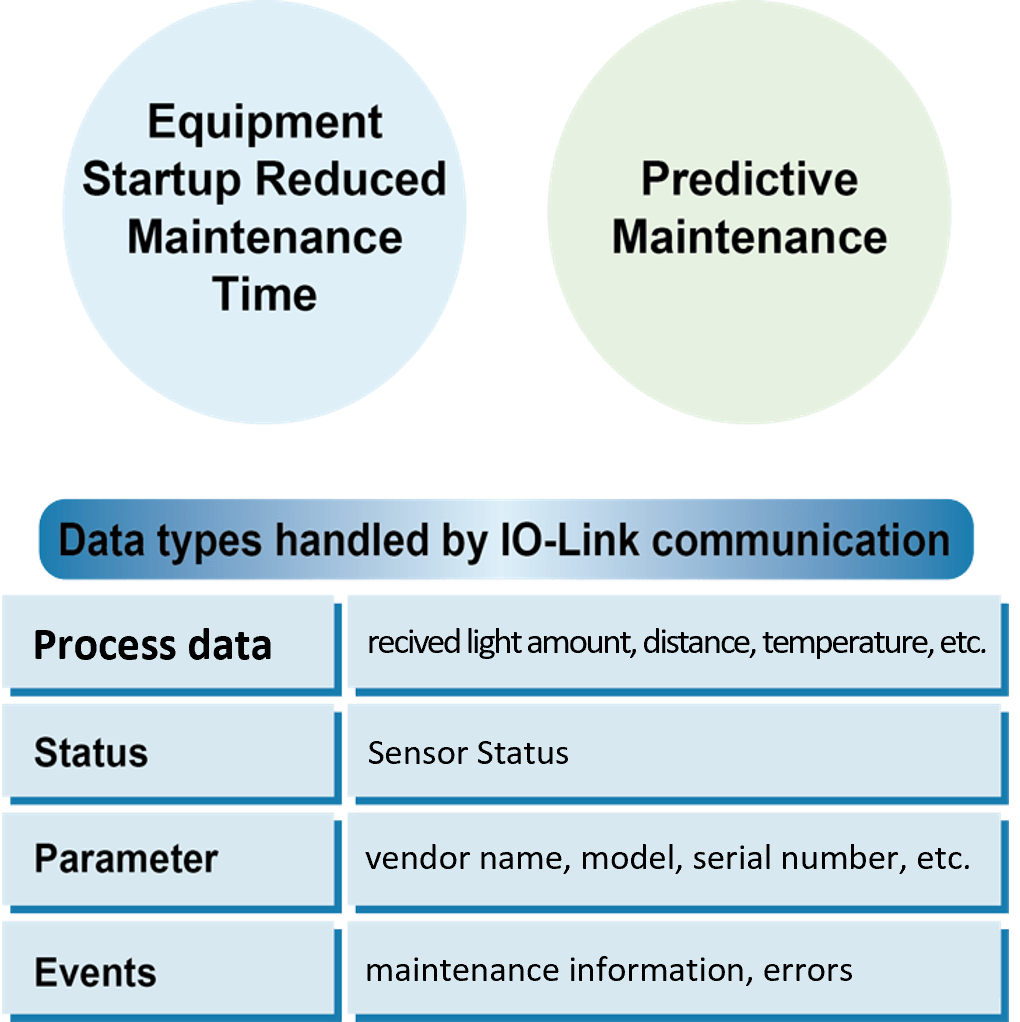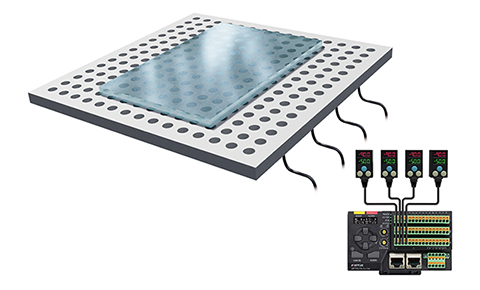IO-Link Complete Guide
This section provides an easy-to-understand overview of IO-Link, its features and benefits.
What is IO-Link?
IO-Link is an industrial interface standard (IEC 61131-9) that connects sensors and actuators. This communication technology enables the exchange of various types of data, which have been managed manually one by one, at the sensor level in line with IIoT.
IO-Link Features
In recent years, there has been an increasing need to digitize data from analog devices and incorporate it into systems. For this purpose, conventional devices are replaced with IO-Link devices. This is expected to reduce the number of devices such as A/D converters or lower the cost of devices.
Components of IO-Link System
The IO-Link system mainly consists of IO-Link Master, IO-Link devices (such as sensors, actuators, etc.), cables and engineering tools.
What you can do with IO-Link
-
IO-Link reduces equipment start-up and maintenance time.
This means that batch sensor settings and I/O checks can be performed from PLC. In addition, an automatic restore function allows the same settings as those of the sensor before replacement to be imported from the IO-Link Master, so maintenance can be completed simply by wiring. 
IO-Link Master of OPTEX FA
IO-Link devices of OPTEX FA
IO-Link Hub
Gateway
Sensors
-

Standard-sized Amplifier Built-in SensorsZ4 Series
Enhanced ambient illuminance resistance against sunlight, incandescent and LED lights
-

Digital Fiber AmplifiersD4RF/D4IF Series
Easy-to-Read, Easy-to-Use, Digital Fiber Sensor Amplifiers
-

IO-Link Supported BGS SensorZ4B Series
High-power LED and IO-Link supported BGS sensor with small spot LED
-

Compact TOF Sensors with DisplayTOF-DL Series
Analog, 3-control and IO-Link output models available
-

Laser Displacement SensorsCD2H Series
High repeat accuracy and linearity for wide range of measurement distances equipped with OLED display and IO-Link
-

IO-Link Compatible Non-Contact ThermometerTI-S Series
High-Speed & High-Accuracy Non-Contact Thermometer with Visible Field of View
-

M18 Cylindrical ThermometersSA-80 Series
Hight speed response, space saving, excellent environmental resistance IO-Link supported Measurement range: 0 to +400°C (+32 to +752°F)
IO-Link Application Examples
IO-Link technical description
This section provides an easy-to-understand overview of IO-Link, its features and benefits. You can learn about IO-Link basic knowledge, technical explanations, and precautions from the tabs below.
Basic Data Types for IO-Link Communication
Fastest Cycle Time for IO-Link
Precautions for using IO-Link
IO-Link Complete Guide
Back to top 







